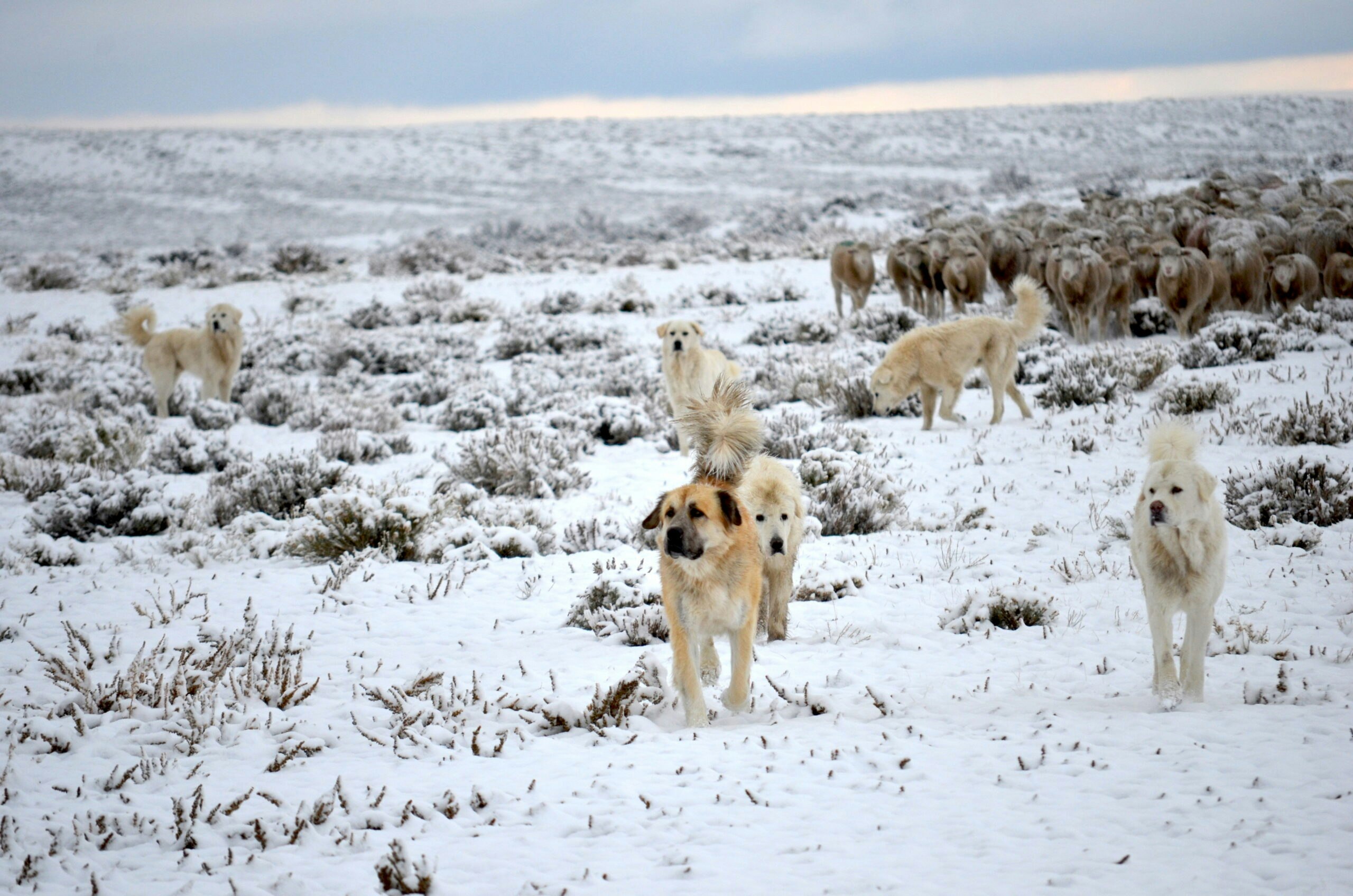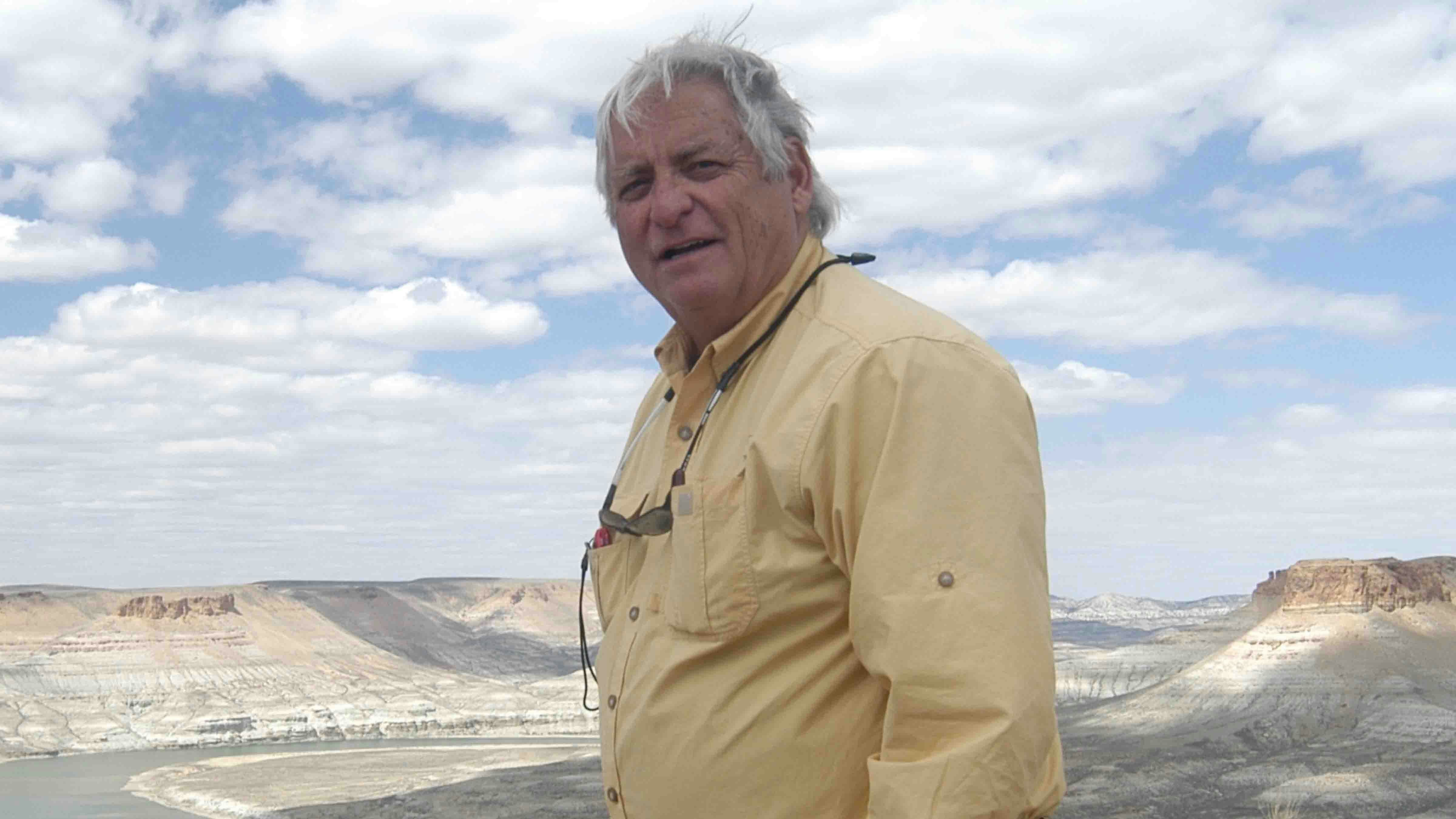By Cat Urbigkit, Range Writing columnist for Cowboy State Daily
The morning after Thanksgiving our house was once again filled with the smell of cooking turkey. But this time it was because we were boiling the carcass remains from the previous day’s feast. The bones are placed in the garbage once the broth is complete, but we pour the bone broth with chunks of meat in canning jars for reheating and pouring over the kibble of our working livestock guardian dogs on cold winter mornings.
Bones from a beef roast, leg of lamb, or leftover bird carcass all provide for delicious bone broth that can be used to make soup, but we like providing a nutrition boost for hard-working dogs and females raising pups.

On Thanksgiving we got the turkey in the oven before daylight and proceeded to outside chores at the first welcoming rays of light. The sheep were still on their bedground with their dogs, so we went across the ranch to check our game cameras, a vital part of our wolf monitoring program.
Fresh wolf tracks in new snow confirmed that wolves had paid an early-morning visit to our sheep range – their third nocturnal visit in a week. A resident female wolf that we helped radio collar a year ago has mostly kept to herself, but after we eliminated her mate a few months ago, she’s brought in another large male to the ranch, and their excursions are becoming more frequent. This male wolf’s track is large and distinct, and I suspect it’s the elusive male we had trouble with last fall and winter.
After we lost our two top guardian dogs, the male had become emboldened, and as I checked the cameras every morning, I would find his tracks atop my boot prints from the day before. As I tracked the wolf, he tracked me, marking and tearing up the ground where I walked, and he began coming to the rocks behind the house. He avoided the cameras, approaching them from behind, until one night in a fit of rage last November he attacked a camera, taking 85 selfies in the process.
That’s when we spooled up the guardian dogs, penned and fed the sheep, and set out wolf traps. After splitting up his pack, the male disappeared from our range. It had been quiet since I’d last come across his sign, but looking at those fresh tracks in the snow, it’s with a tense familiarity.
We follow the wolf tracks through the area our sheep flock grazed the day prior and see where the wolves and the guardian dogs each marked the same territorial boundary. The sheep and their dogs use the area during the day before being pushed toward the house every afternoon. The wolves wait until darkness falls across the range before moving in to explore where the sheep had spent the day.
Two nights ago, the wind-driven snow pushed the flock into the protected cover in the bottom of Sheep Creek. We tracked the wolves up the drainage to within a half-mile of the flock as they moved in response to the sheep movement below. The tracks in the snow left by the wolves, the guardians, and the sheep, lays out the reality of coexistence on the ground. The wolves are nearby, but are currently maintaining a certain distance.
It’s been a hard-fought coexistence. We deferred grazing this range one year and a pack of six wolves took over the range as their own. When we moved in the next year, the wolf pack come within a quarter-mile of the house and our penned sheep, causing massive brawls between the warring canine cousins. The wolves killed pronghorn antelope and mule deer within half-mile of the house, and the pack lounged atop the rocky ridge overlooking our headquarters, as our guardian dogs struggled to widen the territory of protected space. We had guardian dogs injured and killed, dozens of sheep injured and killed, and we’ve injured and killed wolves.
The sheep flock has its own guardian dogs that move with the flock as it grazes, as do the cattle, and we also have a guardian dog pack that controls the area around the ranch headquarters and pens. The wolves are no longer able to roam the ridge overlooking the house because that territory has been taken by the guardian dogs.
The biggest risk is to the sheep, with their smaller size and ever-changing grazing pattern. The livestock guardian dogs have managed to impose a restricted buffer of protection around the flock, but we know that any weakness of the dog pack – or any strengthening of the wolf pack –will cause this uneasy coexistence to end.
So we prepare the bone broth, to boost our working dogs on cold winter mornings, to nourish them for whatever may lie ahead.
Cat Urbigkit is an author and rancher who lives on the range in Sublette County, Wyoming. Her column, Range Writing, appears weekly in Cowboy State Daily. To request reprint permission or syndication of this column, email rangewritesyndicate@icloud.com.





